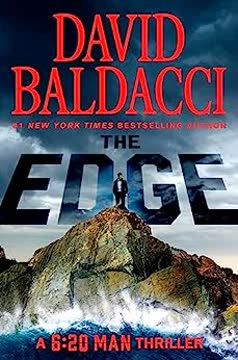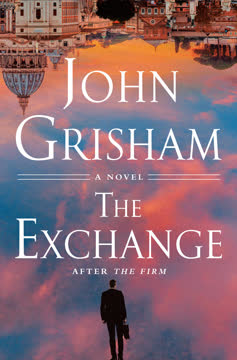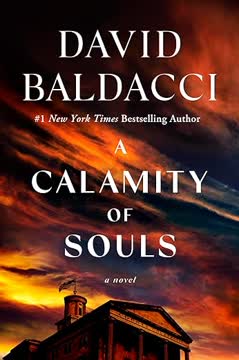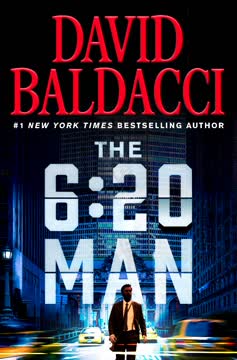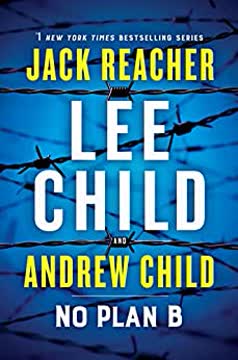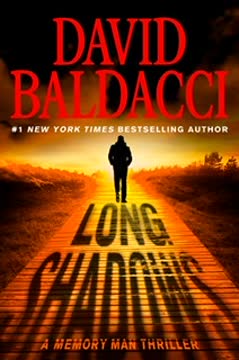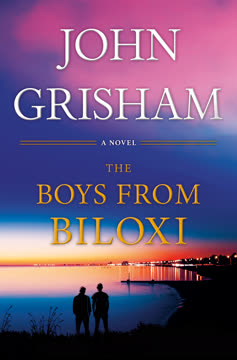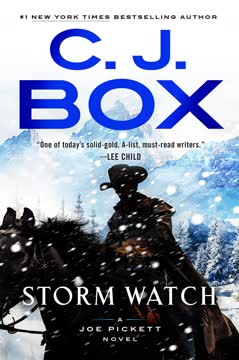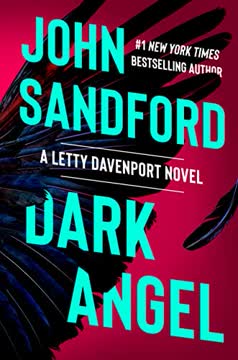Plot Summary
Pills and Proposals
Harry Bosch, retired and weary, contemplates his mortality, only to be interrupted by Renée Ballard, a former partner. She proposes he join her in a newly reconstituted LAPD cold case unit, leveraging his expertise to solve the unsolved Gallagher Family murders—a case that haunts him. Ballard, now in charge of the Open-Unsolved Unit, needs Bosch's help to justify the unit's existence and clear cases, especially the politically sensitive murder of Councilman Pearlman's sister, Sarah. Bosch, initially reluctant due to his fraught history with the department, is drawn back by the chance to pursue justice for the Gallaghers and the promise of purpose.
Cold Case Reborn
Ballard introduces Bosch to the new cold case squad, a mix of retired law enforcement, volunteers, and specialists in genetic genealogy. The unit operates out of a homicide archive, away from the politics of headquarters. Bosch is assigned the Gallagher case but must also review the Sarah Pearlman murder, which has political implications. The team's motto, "Everybody Counts or Nobody Counts," reflects Bosch's personal philosophy, but he's uneasy about the public display of what he considers a private code.
The Library of Lost Souls
Bosch immerses himself in the murder books, starting with the Pearlman case. The archive, filled with thousands of unsolved cases, is a "library of lost souls." Bosch is both inspired and burdened by the sheer volume of unresolved violence. He reviews the Pearlman files, noting the thoroughness of the original investigation but also the lack of leads. The case's only physical clue is a partial palm print on a windowsill, a frustratingly cold trail.
Everybody Counts
The team's work is shaped by the pressure to deliver results, especially for high-profile cases. Ballard juggles political demands, fundraising, and the need to keep the unit alive. Bosch is reminded that every victim deserves justice, but the realities of bureaucracy and politics threaten to undermine that ideal. The tension between personal conviction and institutional constraints becomes a recurring theme.
The Pearlman Connection
Councilman Jake Pearlman's sister, Sarah, was murdered in 1994, and the case remains unsolved. Ballard's unit exists largely because of Pearlman's political clout. Bosch reviews the case, noting the lack of DNA or fingerprint evidence, but is struck by the brutality and the possibility that the killer is a serial offender. The case's political importance means every move is scrutinized, and Ballard must balance investigative integrity with the need to appease powerful interests.
Desert Graves
Bosch visits the Mojave desert grave where the Gallagher family was found, reflecting on the enormity of the crime: an entire family executed and buried. The case is personal for Bosch, who feels the weight of unfinished business. He reconnects with Beto Orestes, the local investigator, and is reminded of the randomness and cruelty of the world, symbolized by the "desert star" flowers blooming at the grave site.
The Gallagher Family Mystery
Bosch briefs the team on the Gallagher case: Stephen Gallagher, his wife, and two children disappeared, their bodies found a year later. The prime suspect, Finbar McShane, an Irish associate, vanished after liquidating the family business. The evidence is circumstantial—a nail gun as the murder weapon, an excavator used to dig the grave, and a suspicious letter from McShane. The case is a classic "bust-out" scheme, but without hard evidence, McShane remains free.
The Palm Print Breakthrough
Bosch suggests extracting DNA from the partial palm print left at the Pearlman crime scene, a technique not available in 1994. Ballard pushes the lab to try, and they succeed in obtaining a DNA profile. The DNA matches another unsolved case: the 2005 murder of Laura Wilson, an aspiring actress. The connection between the two cases—eleven years apart, different victims, but similar brutality—suggests a serial killer.
The Volunteer Squad
The cold case unit is a patchwork of personalities: Ballard, the driven leader; Bosch, the haunted veteran; Masser, the legal mind; Hatteras, the empathic genealogist; and Rawls, a political appointee. Tensions arise over methods and priorities, especially when Hatteras reveals her "empath" abilities, unsettling Bosch. The team must navigate internal politics, personal beliefs, and the ever-present pressure to deliver results.
The Empath's Intuition
Hatteras, the team's genealogist, claims to sense truths about suspects and victims, leading to friction with Bosch, who distrusts anything unscientific. Ballard mediates, recognizing the value of both intuition and hard evidence. Hatteras's insights, though controversial, sometimes point the team in useful directions, blurring the line between rational investigation and gut feeling.
The Button in the Drawer
In Laura Wilson's apartment, Ballard finds a campaign button from Pearlman's 2005 city council run. The button, seemingly innocuous, becomes a crucial link: it suggests the killer may have encountered Wilson while canvassing for Pearlman. The team investigates campaign records, volunteers, and the possibility that the killer was someone within Pearlman's circle, raising uncomfortable questions about proximity and trust.
DNA and Deception
The DNA from the palm print and the urine at the Wilson scene points to a man with kidney disease. The team investigates medical records, searching for someone with a nephrectomy (kidney removal) in the right time frame. Suspicion falls on Nelson Hastings, Pearlman's chief of staff, who fits the medical profile and has a murky history. A covert operation to collect his DNA, however, reveals he is not the killer—but he donated a kidney to Ted Rawls, the team's own member.
The Long Game
The revelation that Rawls, a volunteer investigator, received a kidney transplant and matches the medical and genetic profile of the killer shocks the unit. Rawls, placed on the team by political fiat, has been hiding in plain sight, helping investigate his own crimes. The team scrambles to gather evidence, but Rawls, sensing the net closing, flees and ultimately dies in a confrontation with Bosch.
The Suspect Among Us
The fallout from Rawls's exposure is immense. The unit faces public scrutiny, political backlash, and internal soul-searching. Ballard and Bosch are forced to defend their choices, even as the media and department leadership consider shutting down the unit. The case becomes a cautionary tale about the dangers of unchecked power, the limits of background checks, and the unpredictability of human nature.
The Fox in the Henhouse
As the dust settles, the team discovers that Rawls may have been responsible for other unsolved murders, and that at least one innocent man, Jorge Ochoa, was wrongfully convicted for a crime Rawls committed. Ballard works to exonerate Ochoa, facing bureaucratic resistance and the inertia of the justice system. The case becomes a meditation on the fallibility of institutions and the importance of relentless pursuit of truth.
The Dumpster Dive
Bosch and Ballard, following a hunch, search dumpsters behind Rawls's business and recover a box of souvenirs—trophies from his victims, including a nightgown, slippers, and a bracelet. The items help link Rawls to additional murders and provide the evidence needed to free Ochoa. The search is both literal and symbolic: justice often requires digging through the refuse of the past.
The Final Confession
With the Rawls case closed, Bosch turns back to the Gallagher Family mystery. He tracks Finbar McShane to Key West, Florida, where McShane has assumed a new identity. In a tense confrontation, Bosch forces a confession from McShane, who admits to killing the Gallaghers. The encounter is fraught with moral ambiguity—Bosch, facing his own mortality, is willing to risk everything for the truth.
Ashes to Ashes
Bosch and Ballard return to the desert grave of the Gallagher family to scatter their ashes, fulfilling a promise and symbolically closing the case. Both are changed by the experience—Bosch, confronting his own impending death, finds a measure of peace; Ballard, inspired by Bosch's relentless pursuit of justice, recommits to the work. The desert star flowers, blooming against all odds, become a symbol of resilience and hope in a world marked by loss.
Characters
Harry Bosch
Bosch is a retired LAPD detective, defined by his deep sense of justice and personal code: "Everybody counts or nobody counts." He is haunted by unsolved cases, especially the Gallagher Family murders, and struggles with aging, illness, and the meaning of his life's work. Bosch's relationships are marked by loyalty and a willingness to sacrifice for others, but he is also stubborn, skeptical, and resistant to change. His journey in this story is both external (solving cases) and internal (coming to terms with mortality and legacy).
Renée Ballard
Ballard is the head of the Open-Unsolved Unit, a tenacious and resourceful detective who must navigate the politics of the LAPD, the demands of powerful stakeholders, and the complexities of her diverse team. She is empathetic but pragmatic, willing to bend rules to achieve justice. Ballard's partnership with Bosch is central—she admires his integrity but must also manage his rebelliousness. Her growth is seen in her increasing confidence as a leader and her ability to balance intuition with evidence.
Finbar McShane
McShane is the prime suspect in the Gallagher Family murders, a manipulative and cunning figure who disappears after the crime. His ability to reinvent himself and evade capture makes him a symbol of the unfinished business that haunts Bosch. When finally confronted, McShane's confession is chilling, revealing a capacity for violence and a lack of remorse that underscores the darkness at the heart of the story.
Ted Rawls
Rawls is a volunteer investigator on the cold case team, placed there by political connections. Outwardly affable and competent, he is ultimately revealed as the serial killer responsible for multiple unsolved murders, including those of Sarah Pearlman and Laura Wilson. Rawls's presence within the team is a devastating betrayal, forcing the characters to confront the limits of trust and the dangers of hidden evil.
Nelson Hastings
Hastings is Councilman Pearlman's chief of staff, a shrewd and secretive figure who becomes a suspect due to his medical history and proximity to the cases. His role as a gatekeeper and manipulator of information makes him both an obstacle and, ultimately, a source of crucial information. Hastings's willingness to sacrifice himself to protect Pearlman adds complexity to his character.
Colleen Hatteras
Hatteras is the team's investigative genetic genealogist, a civilian with a self-proclaimed gift for empathy. Her unconventional methods and claims of psychic intuition create tension within the team, especially with Bosch. Despite skepticism, her insights sometimes prove valuable, highlighting the interplay between intuition and science in detective work.
Jake Pearlman
Pearlman is a city councilman whose sister's unsolved murder is the catalyst for the unit's creation. His political influence is both a blessing and a curse, providing resources but also distorting priorities. Pearlman's personal grief and quest for closure humanize him, but his actions also raise questions about the intersection of politics and justice.
Sheila Walsh
Walsh is the former office manager for the Gallagher family business, holding key information about McShane's actions. Her fear, guilt, and eventual confession are pivotal in breaking the case. Walsh's story explores themes of complicity, survival, and the moral cost of silence.
Jorge Ochoa
Ochoa is a man imprisoned for a murder actually committed by Rawls. His case becomes a symbol of the justice system's fallibility and the importance of relentless investigation. Ochoa's exoneration is a bittersweet victory, highlighting the human cost of error.
Maddie Bosch
Maddie is Bosch's daughter, a young police officer herself. Her relationship with her father is marked by love, concern, and the tension between independence and responsibility. Maddie's discovery of Bosch's illness and his preparations for death add emotional depth and underscore the generational impact of trauma and justice.
Plot Devices
Cold Case Structure
The novel uses the structure of a cold case unit to weave together multiple timelines and cases. The interplay between old evidence and new technology (especially genetic genealogy and DNA analysis) drives the plot, allowing for the re-examination of past failures and the discovery of hidden connections.
Political Pressure and Bureaucracy
The unit's existence and priorities are dictated by political interests, especially those of Councilman Pearlman. The need to deliver results, manage public perception, and navigate departmental politics creates constant tension and shapes the characters' decisions.
Red Herrings and Misdirection
The narrative uses misdirection, especially with Hastings and Rawls, to keep both characters and readers off balance. The revelation that the killer is within the team is a powerful twist, forcing a re-evaluation of trust and the dangers of proximity.
Forensic Innovation
The use of new forensic techniques—extracting DNA from old palm prints, leveraging genetic genealogy—serves as both a plot engine and a commentary on the evolution of detective work. The tension between science and intuition is embodied in the team's diverse methods.
Moral Ambiguity and Personal Codes
Bosch's personal code ("Everybody counts or nobody counts") is tested by the realities of bureaucracy, politics, and his own mortality. The story explores the gray areas of justice, the limits of institutional solutions, and the necessity of individual conscience.
Symbolism of the Desert Star
The desert star flowers at the Gallagher grave become a recurring symbol of endurance, beauty, and the possibility of redemption in a world marked by violence and loss.
Analysis
Desert Star is a meditation on justice, mortality, and the enduring scars of violence. Through the lens of a cold case unit, Michael Connelly explores the tension between institutional imperatives and personal conviction, the power and limits of science, and the unpredictable nature of evil. The novel's central twist—that the killer is hiding within the team—serves as a powerful metaphor for the dangers of complacency and the necessity of vigilance. Bosch's journey, marked by physical decline and existential reckoning, is both a personal and professional odyssey, culminating in a final act of closure that is as much about his own legacy as about the victims he serves. The story's ultimate message is one of resilience: in a world where loss and injustice are inevitable, the pursuit of truth and the refusal to forget the forgotten are acts of defiance and hope. The desert star, blooming against all odds, is a fitting emblem for the characters' struggle—and for the enduring human need to find meaning amid the ruins.
Last updated:
FAQ
Synopsis & Basic Details
What is Desert Star about?
- A Haunting Return to Duty: Retired LAPD detective Harry Bosch is drawn back into the world of cold cases by Detective Renée Ballard, who is tasked with reconstituting the Open-Unsolved Unit. Bosch, battling his own mortality and a deep-seated weariness, is pulled back by the chance to finally solve the Gallagher Family murders, a quadruple homicide that has long haunted him.
- Dual Investigations Unfold: The narrative follows two primary investigations: the long-unsolved Gallagher Family case, where Bosch relentlessly pursues elusive suspect Finbar McShane, and the politically charged Sarah Pearlman murder, which unexpectedly links to the Laura Wilson case through a DNA breakthrough, revealing a serial killer hiding in plain sight within the unit itself.
- Justice Beyond the Badge: The story explores the relentless pursuit of justice against a backdrop of bureaucratic hurdles, political pressures, and the evolving landscape of forensic science. It delves into the personal costs of detective work, the fallibility of the justice system, and the profound impact of unsolved crimes on victims' families and the investigators who carry their burdens.
Why should I read Desert Star?
- Deep Dive into Detective Psyche: Readers gain unparalleled access to Harry Bosch's internal world as he grapples with aging, illness, and his unwavering "Everybody Counts or Nobody Counts" philosophy, offering a poignant exploration of legacy and purpose. The novel provides a raw, unfiltered look at the emotional toll of a life dedicated to the dead.
- Masterful Plot Weaving: Michael Connelly expertly interlaces two complex cold cases, showcasing the evolution of forensic science (like genetic genealogy) and the intricate dance between intuition and evidence. The narrative is a clinic in suspense, misdirection, and the slow, methodical grind of police work, culminating in shocking revelations.
- Rich Character Dynamics: The partnership between the seasoned, rule-bending Bosch and the ambitious, pragmatic Ballard is a compelling study in contrasts and mutual respect. Their evolving relationship, alongside a diverse cast of supporting characters, adds layers of human drama and ethical dilemmas, making the pursuit of justice deeply personal.
What is the background of Desert Star?
- Post-Pandemic LAPD Landscape: The novel is set against a backdrop of a Los Angeles Police Department grappling with budget cuts, public scrutiny, and a renewed focus on cold cases due to political pressure. The disbandment and subsequent reconstitution of the Open-Unsolved Unit reflect real-world challenges faced by law enforcement agencies in prioritizing resources and maintaining public trust.
- Advancements in Forensic Science: A key technological background element is the integration of cutting-edge DNA analysis and investigative genetic genealogy (IGG). The story highlights how these innovations, like extracting DNA from old palm prints or using public genealogy databases, revolutionize cold case investigations, offering new hope for previously unsolvable crimes.
- Political Influence on Justice: The narrative is heavily influenced by the political machinations surrounding Councilman Jake Pearlman's desire for justice for his murdered sister. This creates a constant tension between the pure pursuit of truth and the need to appease powerful figures, illustrating how political capital can both enable and complicate police work.
What are the most memorable quotes in Desert Star?
- "Everybody Counts or Nobody Counts.": This iconic Harry Bosch mantra, painted on the wall of the Open-Unsolved Unit, encapsulates his unwavering moral code and the core philosophy driving his relentless pursuit of justice for every victim, regardless of their status or the age of their case. It serves as a constant reminder of the unit's mission and Bosch's personal creed.
- "The arc of the moral universe is long but it bends toward justice.": Quoted by Sheila Walsh, this Martin Luther King Jr. adage reflects a central theme of the novel: the enduring, often slow, but ultimately hopeful, trajectory towards truth and accountability, even when the path is fraught with obstacles and personal costs. It offers a philosophical counterpoint to the grim realities of murder.
- "Sometimes you do the wrong thing for the right reason.": Uttered by Bosch in the epilogue, this profound statement encapsulates his final, morally ambiguous act in Key West. It speaks to the complex ethical landscape of detective work, where personal codes of justice can sometimes transcend legal boundaries to achieve a greater, albeit unconventional, form of resolution.
What writing style, narrative choices, and literary techniques does Michael Connelly use?
- Gritty Realism and Procedural Detail: Connelly employs a highly realistic, procedural style, meticulously detailing the investigative steps, forensic processes, and bureaucratic hurdles faced by detectives. This immersion in the "shoe-leather" work, combined with the integration of modern techniques like IGG, grounds the narrative in authenticity, making the breakthroughs feel earned.
- Dual Protagonist Perspective: The novel primarily utilizes a third-person limited perspective, alternating between Harry Bosch and Renée Ballard. This narrative choice allows readers deep insight into both characters' internal thoughts, motivations, and struggles, highlighting their contrasting yet complementary approaches to police work and their evolving partnership.
- Subtle Foreshadowing and Misdirection: Connelly masterfully weaves in subtle clues and red herrings, often through seemingly innocuous dialogue or minor character interactions, that build suspense and lead to unexpected revelations. The gradual unveiling of Ted Rawls's true identity, for instance, is a testament to this technique, keeping readers constantly re-evaluating their assumptions.
Hidden Details & Subtle Connections
What are some minor details that add significant meaning?
- Bosch's Pill Drawer: The opening scene where Bosch sweeps his pills into a drawer before Ballard enters subtly foreshadows his hidden illness and his contemplation of mortality, a personal struggle that underpins his renewed drive for justice. This small act immediately establishes a deeper, more vulnerable side to the usually stoic detective.
- The "JAKE!" Campaign Button's Journey: The discovery of the campaign button in Laura Wilson's junk drawer, initially a seemingly random item, becomes a crucial, almost improbable, link between two disparate murder victims and the political sphere. Its presence highlights the unexpected ways seemingly insignificant objects can hold vital clues and connect seemingly unrelated lives.
- Sheila Walsh's Travel Agency: The detail of Sheila Walsh's home office being filled with cruise brochures and her new career as an online travel agent provides the seemingly innocuous context for Finbar McShane's final, cryptic clue about the "Norwegian Dawn" cruise ship. This mundane detail becomes the unlikely key to unlocking McShane's whereabouts.
What are some subtle foreshadowing and callbacks?
- Rawls's "Glacial Pace": Ballard's early frustration with Ted Rawls's slow work pace and his constant reporting of "still reviewing" cases subtly foreshadows his true nature as a killer trying to avoid detection. His lack of progress isn't incompetence, but a deliberate stalling tactic to keep the unit from uncovering his crimes.
- The "Gunslinger" Label: The reporter Keisha Russell's callback to Bosch being labeled a "gunslinger" in past court documents subtly foreshadows his final, decisive, and morally ambiguous confrontation with Finbar McShane. It hints at Bosch's inherent nature to take justice into his own hands when institutional avenues fail.
- The "Library of Lost Souls": Bosch's internal naming of the homicide archive as the "library of lost souls" is a poignant callback to his lifelong dedication to the forgotten victims. This phrase not only sets the somber tone of the unit's work but also foreshadows the discovery of Jorge Ochoa, a "lost soul" wrongfully imprisoned, whose case is literally found within those very archives.
What are some unexpected character connections?
- Hastings's Kidney Donation to Rawls: The revelation that Nelson Hastings donated a kidney to Ted Rawls is a shocking and deeply ironic connection, transforming Hastings from a primary suspect (due to his own nephrectomy) into an unwitting enabler of the serial killer. This twist highlights the hidden complexities of personal relationships and the tragic consequences of misplaced loyalty.
- Rawls's Early Connection to Pearlman's Circle: The detail that Ted Rawls was an early, albeit peripheral, member of Jake Pearlman's high school social circle and later a volunteer in his 2005 campaign, provides a chilling, unexpected link between the killer and both victims. It suggests a predatory pattern rooted in proximity and opportunity, rather than random chance.
- Bosch's Daughter's Fentanyl Discovery: Maddie Bosch's discovery of the counterfeit fentanyl pills in her father's drawer, combined with his "goodbye" note, creates an unexpected and deeply personal connection to his hidden illness. This detail reveals the profound emotional burden Bosch carries and his contemplation of a self-determined "end of watch," linking his professional pursuit of justice to his private battle with mortality.
Who are the most significant supporting characters?
- Darcy Troy, the DNA Tech: Darcy Troy, the LAPD DNA technician, is crucial as the scientific linchpin of the unit's breakthroughs. Her willingness to "jump the line" and perform cutting-edge analysis on the palm print and the urine sample, driven by professional curiosity and a desire to be "first," directly enables the connection between the Pearlman and Wilson cases, and later, the identification of Rawls.
- Tommy, the Key West Bartender: Tommy, the seemingly gruff but insightful bartender at the Chart Room in Key West, serves as Bosch's unexpected informant. His deep knowledge of local bar history and his subtle recognition of "Davy Byrne" (Finbar McShane's alias) provide the critical lead that allows Bosch to finally track down the elusive Gallagher killer, demonstrating the value of local knowledge in cold cases.
- Keisha Russell, the Investigative Reporter: Keisha Russell, the tenacious investigative reporter, plays a pivotal role in exposing the LAPD's internal politics and the uncomfortable truth about Ted Rawls's position within the Open-Unsolved Unit. Her willingness to pursue the full story, even when it implicates powerful figures, acts as an external force for accountability, pushing the department to confront its own missteps.
Psychological, Emotional, & Relational Analysis
What are some unspoken motivations of the characters?
- Ballard's Need for Validation: Beyond solving cases, Ballard is driven by an unspoken need to prove the worth of her reconstituted unit and, by extension, her own leadership. Her constant awareness of "optics" and the pressure from Councilman Pearlman reveals a motivation to secure the unit's longevity and her place within the LAPD hierarchy.
- Hastings's Fierce Loyalty: Nelson Hastings's willingness to lie and potentially sacrifice his own reputation to protect Jake Pearlman, even after discovering Rawls's true nature, speaks to a deep, almost familial, loyalty. His motivation transcends mere political expediency, hinting at a profound personal bond or a sense of indebtedness to Pearlman.
- Rawls's Compulsion for Trophies: Ted Rawls's collection of "souvenirs" from his victims, meticulously kept in a box in his car, reveals a deep psychological compulsion beyond the act of murder itself. This unspoken motivation for collecting trophies suggests a need to relive his crimes, assert control, or perhaps even a twisted form of self-aggrandizement.
What psychological complexities do the characters exhibit?
- Bosch's Existential Weariness: Harry Bosch grapples with profound psychological complexities stemming from his terminal illness and the weight of his career. His contemplation of "end of watch" pills and his desire for a "clean" exit reveal a man wrestling with control over his own mortality, seeking to impose order on the chaos of his impending death, much like he seeks order in unsolved cases.
- Ballard's Pragmatic Idealism: Renée Ballard exhibits the psychological complexity of a leader who must balance her idealistic pursuit of justice with the pragmatic realities of bureaucracy and political pressure. Her internal conflict is evident in her frustration with Rawls's appointment and her calculated decision to use Bosch's "stunt" to expose the truth, showing a willingness to bend rules for a greater good.
- Sheila Walsh's Burden of Complicity: Sheila Walsh carries the heavy psychological burden of her past complicity in Finbar McShane's "bust-out" scheme and her subsequent silence about his return. Her initial fear and later her tears, coupled with her desperate plea for Bosch to leave her son alone, reveal the long-term psychological toll of guilt and the moral compromises made for survival.
What are the major emotional turning points?
- Juanita Wilson's Plea for Answers: Juanita Wilson's frail, cancer-stricken voice telling Bosch, "I'm on a clock, Detective Bosch. I have cancer. A terminal cancer and I want to know before … the end," serves as a major emotional turning point for Bosch. It re-ignites his personal fire for justice, making the pursuit of Rawls and later McShane intensely personal and urgent, transcending mere professional duty.
- Ballard's Discovery of the "JAKE!" Button: Ballard's discovery of the "JAKE!" campaign button in Laura Wilson's junk drawer is a pivotal emotional moment, shifting the investigation from a cold case to a deeply unsettling personal connection. It sparks her intuition that the killer is closer than imagined, injecting a new level of urgency and personal investment into the case.
- Bosch's Confrontation with McShane's Cruelty: The moment Finbar McShane chillingly confirms that Emma and Stephen Jr. "were on their knees. And they knew what was coming," is a profound emotional turning point for Bosch. This revelation of the children's terror ignites a "deep rage" and a "primal scream for justice," pushing Bosch to abandon all legal niceties and deliver his own form of finality.
How do relationship dynamics evolve?
- Bosch and Ballard: From Mentor-Mentee to Equal Partners: Their relationship evolves from Ballard seeking Bosch's expertise as a mentor to a dynamic of mutual respect and equal partnership. This is evident in Ballard's willingness to trust Bosch's unconventional methods (like the Chicago trip) and Bosch's eventual admission of his illness to her, signifying a deep bond built on shared purpose and vulnerability.
- Hastings and Pearlman: Loyalty Tested and Confirmed: The dynamic between Nelson Hastings and Jake Pearlman is initially presented as a political alliance, but it evolves to reveal Hastings's profound, almost self-sacrificing, loyalty. Hastings's willingness to take the fall for Rawls's appointment to protect Pearlman underscores a deeper, unwavering commitment that transcends professional obligation.
- Bosch and Maddie: Confronting Mortality and Legacy: The father-daughter relationship undergoes a significant evolution as Maddie discovers Bosch's illness and his "goodbye" note. This forces a raw, honest conversation about his mortality and legacy, shifting their dynamic from one of Bosch protecting Maddie from his world to Maddie actively engaging with his vulnerability and seeking to support him.
Interpretation & Debate
Which parts of the story remain ambiguous or open-ended?
- The Full Extent of Rawls's Victims: While Ted Rawls is definitively linked to Sarah Pearlman and Laura Wilson, and evidence suggests other victims, the novel leaves the full scope of his crimes ambiguous. The "box of keepsakes" implies many more, but the specific identities and circumstances of these potential victims remain largely unknown, leaving a chilling open-endedness to his reign of terror.
- The Future of the Open-Unsolved Unit: Despite the unit's success in solving high-profile cases, its future remains uncertain due to the political fallout from Rawls's exposure. The chief's contemplation of "cleaning house" and Ballard's defiant stance leave the unit's long-term viability and its ability to continue pursuing justice in question.
- Bosch's Ultimate Fate and Legacy: While Bosch confronts his illness and makes peace with his past, his ultimate fate is left open-ended. His decision to stop taking his pills and his final act of scattering the Gallagher ashes suggest a form of closure, but the reader is left to ponder how much time he has left and what his final legacy will be beyond the pages of the novel.
What are some debatable, controversial scenes or moments in Desert Star?
- Bosch's "End of Watch" Plan: Harry Bosch's revelation that he keeps counterfeit fentanyl pills for a self-determined "end of watch" is highly controversial. This challenges traditional notions of heroism and the sanctity of life, forcing readers to grapple with the ethics of assisted dying, especially for a character who has dedicated his life to preserving others'.
- Bosch's Confrontation and Killing of McShane: The scene where Bosch confronts Finbar McShane in Key West and ultimately kills him with a screwdriver is a morally ambiguous and debatable moment. Given Bosch's retired status and the lack of legal authority, his actions blur the lines between justice and vigilantism, raising questions about whether the "wrong thing for the right reason" justifies extra-legal violence.
- The LAPD's Handling of Rawls's Exposure: The department's decision to downplay Ted Rawls's role as an internal serial killer and to omit his political appointment from the public narrative is a controversial moment. It sparks debate about institutional transparency, the protection of public image over full disclosure, and the ethical compromises made by law enforcement in the face of scandal.
Desert Star Ending Explained: How It Ends & What It Means
- A Dual Pursuit of Justice Culminates: The novel concludes with the resolution of both primary cold cases. Ted Rawls, the serial killer within the unit, is identified and dies in a confrontation with Bosch, leading to the exoneration of Jorge Ochoa. Simultaneously, Bosch tracks Finbar McShane to Key West, where he extracts a confession and delivers his own form of final justice, closing the Gallagher Family case.
- Bosch's Personal Reckoning and Legacy: The ending is deeply personal for Harry Bosch. He confronts his terminal illness, revealing it to Maddie and accepting his impending death. His final act of scattering the Gallagher family's ashes in the desert, a promise fulfilled, symbolizes his ultimate commitment to justice and finding peace with his life's work, even if it means operating outside the law. His "wrong thing for the right reason" philosophy defines his legacy.
- Resilience and the Enduring Quest for Truth: The novel concludes with a poignant reflection on resilience, symbolized by the "desert star" flowers. Despite the darkness of the crimes, the fallibility of institutions, and the personal costs, the ending emphasizes the enduring human need for truth and accountability. Ballard, inspired by Bosch's relentless spirit, recommits to the Open-Unsolved Unit, suggesting that the pursuit of justice, though imperfect, will continue.
Review Summary
Desert Star receives largely positive reviews, with readers praising Connelly's expert storytelling and character development. Many appreciate the evolving relationship between Bosch and Ballard as they investigate cold cases. Some note the book's somber tone and hints at Bosch's possible final case. While a few critics find the plotting predictable or characters less engaging, most fans consider it another strong entry in the long-running series, highlighting Connelly's consistent quality over decades of writing.
Harry Bosch Universe Series
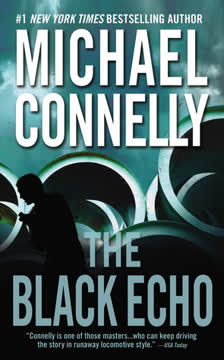
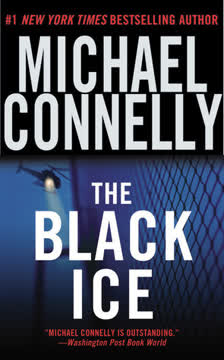
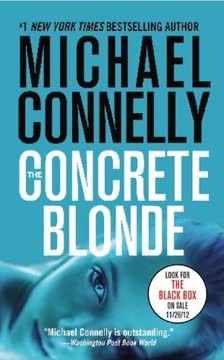
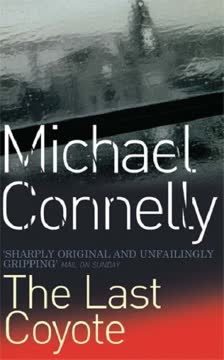
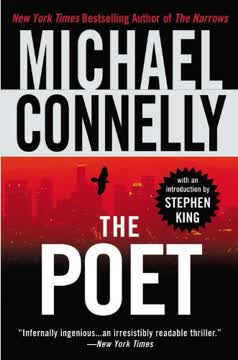
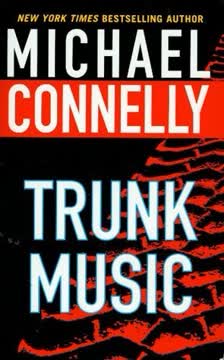

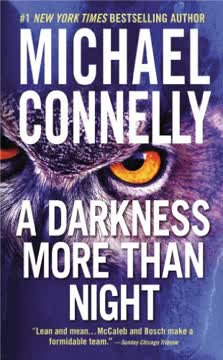
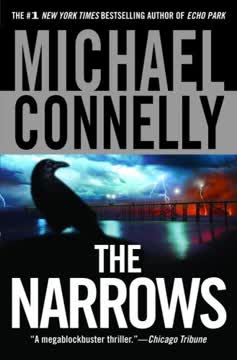
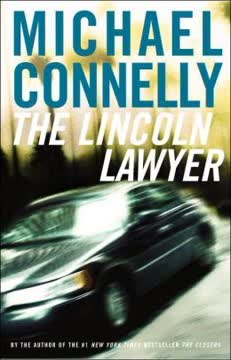
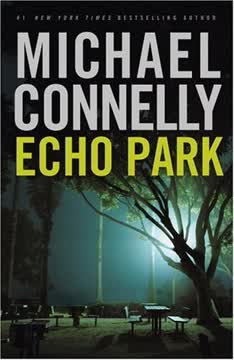
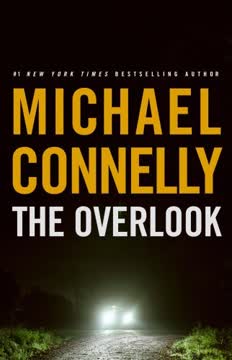


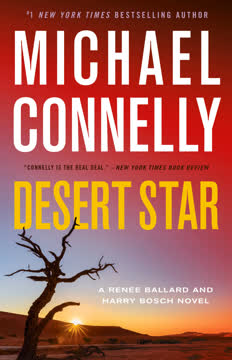
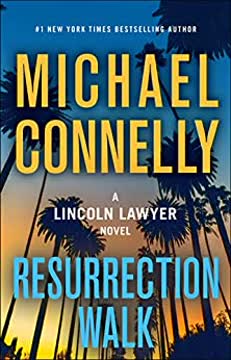
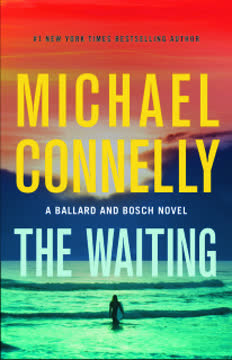
Similar Books
Download PDF
Download EPUB
.epub digital book format is ideal for reading ebooks on phones, tablets, and e-readers.
